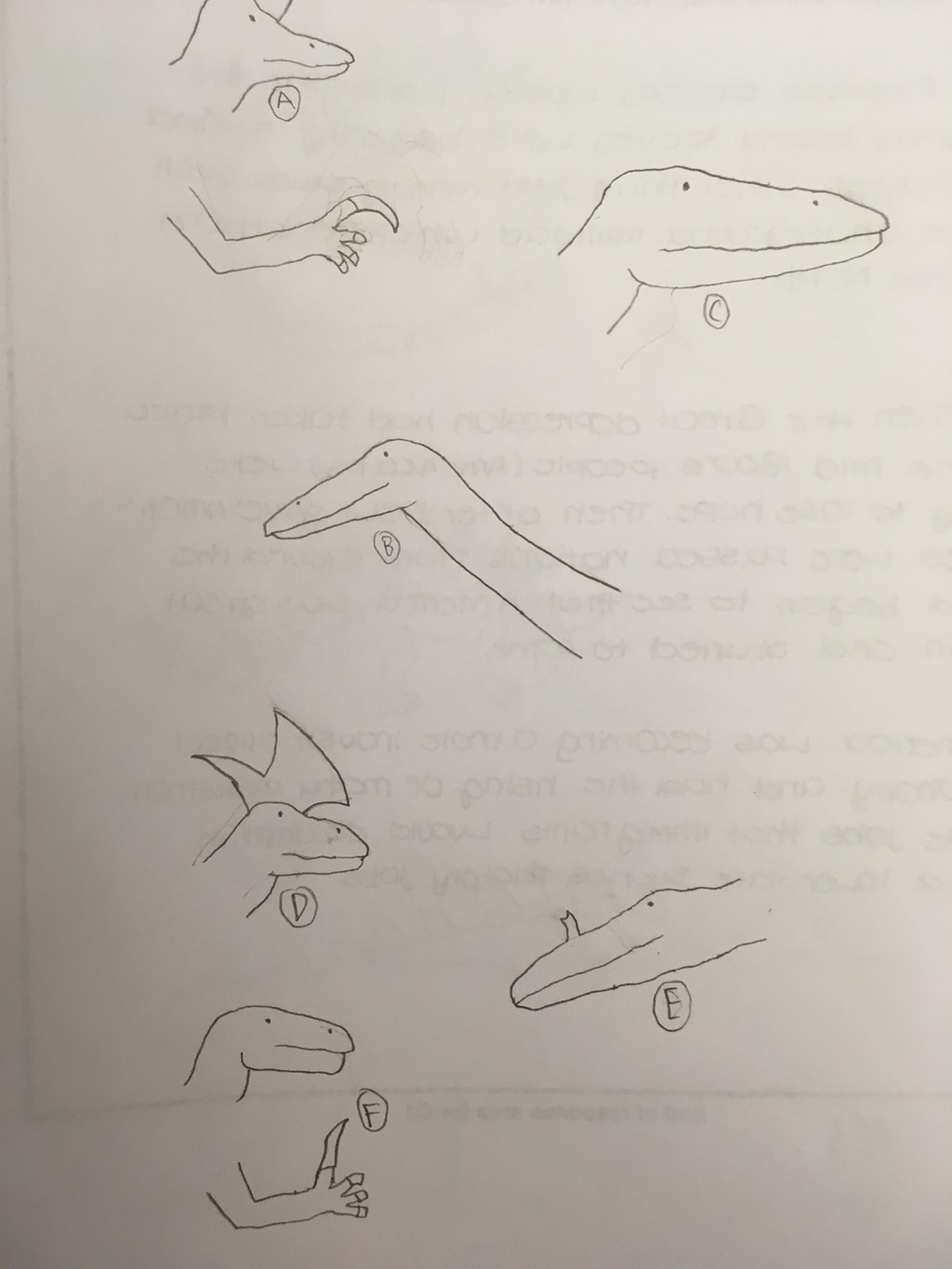HOME | DD
 Lediblock2 — Retrosaur Challenge 4.1 - 4. 6
Lediblock2 — Retrosaur Challenge 4.1 - 4. 6

#thenewdinosaurs #dinosaurpark #tyrantisterror #retrosaurs #inaccuratedinosaurs #paleofails #duckbilledgoliaths #corythosaurus #dougaldixon #hadrosaur #hadrosaurs #hadrosaurus #iguanodon #lambeosaurus #shantungosaurus #speculativedinosaurproject #speculativeevolution #awesomebro #30dayretrosaurchallenge #retrosaurchallenge #watergulp
Published: 2017-04-11 01:33:50 +0000 UTC; Views: 4853; Favourites: 14; Downloads: 0
Redirect to original
Description
An inhabitant of Mid-Cretaceous Utah, Corythonychus was a fairly average-sized Duck-Billed Goliath standing about 23 feet tall and measuring roughly 30 feet in length. However, it was far from a pushover - its long, powerful arms were each equipped with a massive hooked talon on the thumb, perfect for gutting would-be predators.Dolichohadros was a quite large and fairly unusual species of Duck-Billed Goliath from the Mid-Cretaceous of what would become eastern Asia in the modern day. Having evolved in an environment without any Long-Necked Goliaths, it seems that this creature decided to take up the niche itself, developing a long, powerful neck and bulky hind legs structured like those of a frog's and a short, thick tail to serve as a counterbalance. New research suggests that it also used this long neck to dabble for water plants growing on the bottoms of particularly deep bodies of water, using its powerful hind legs to kick through the water and its tail to steer. It measured nearly 40 feet tall when standing with its neck fully upright, and it was about 28 feet long.
Anatogigas was a native of Late Cretaceous China during the very end of the Mesozoic Era, where it reigned as the largest member of the Duck-Billed Goliath clade to ever live. Measuring nearly 50 feet in length and standing over 45 feet tall at the shoulder, it weighed about as much as a dozen African elephants put together on a scale; it dwarfed even several species of Long-Necked Goliaths. Fully terrestrial, this gargantuan creature had a very similar body structure to the giant ground sloths of the Pleistocene, with long, powerful arms for grabbing vegetation, great hooked claws, and a massive bulky body. Unlike ground sloths, however, its mass was counterbalanced by a long, heavy tail studded with sharpened osteoderms for use as a weapon, and it walked on a pair of powerful hind legs.
First discovered in Canada, fossils of Securemacrista have since been dug up all across the American West, where it lived during the Late Cretaceous. Fairly stocky when compared to other members of its family at about 28 feet long and 17 feet tall, weighing in at nearly five tons, these creatures were more terrestrial than most of their cousins, with long powerful hind legs to carry them across the landscape. Evidence suggests that they moved in herds of dozens of animals, and wear and tear on their namesake axe-shaped crests tells that they were frequently used for combat, not for display as initially thought.
Anatohydrum was an inhabitant of Late Cretaceous Utah, where it shared its habitat with giants like Agathaumas and Dynamosaurus. To escape competition from the former and predation from the latter, this 35-foot-long, 12-ton beast took the semi-aquatic lifestyle of its ancestors to the extreme - its front limbs developed into sea turtle-like flippers, and its hind legs where roughly halfway towards that same goal. Its nostrils were mounted on flexible tubes to allow the creature to breathe without lifting its head above water so as not to alert predators to its presence - however, it was still hunted by various large crocodilians, as well as freshwater members of the various Leviathan clades.
Found in rocks dating from the Mid-Cretaceous to the Late Cretaceous all throughout Europe, Pugiomanus was a fairly average-sized Duck-Billed Goliath, about 30 feet long and 6 tons, that earned its name from the razor-sharp blade-like claw that it sported on its thumb, perfect both for hacking down vegetation like a machete and slicing at carnivorous retrosaurs that tried to take a bite out of it.
Next part in the challenge: Duck-Billed Goliaths, based upon oldschool hadrosaurs.
Corythonychus is based off of Corythosaurus, obviously, with a dash of Iguanodon and even Megaraptor thrown in.
Dolichohadros is based on this lovely girl! Shame on you for accuracy-shaming, palaeofails! (But seriously, I feel like part of my soul dies every time I look at that blog. Jesus Christ, people, creativity isn't an assault on science itself)
Anatogigas is based on Shantungosaurus, as well as Woodward's very dragon-like depiction of Iguanodon.
Securemacrista is based on Lambeosaurus, with the Canada thing being a nod to Dinosaur Park (Despite Lambeosaurus not actually being found there, iirc)
Anatohydrum is based on the old theory that hadrosaurs were aquatic and used their crests as snorkels; it's also based off of the duckgongs from the Speculative Dinosaur Project, as well as the watergulp from The New Dinosaurs
Pugiomanus is based on Iguanodon, but with blades instead of spikes because hurr durr awesomebro durr. Am I a hip paleoartist yet?
Related content
Comments: 5

Corythonychus = "helmeted claw"
Dolichohadros = "long hadrosaur"
Anatogigas = "duck giant"
Securemacrista = "axe/hatchet crest"
Anatohydrum = "serpent duck"?
Pugiomanus = "dagger hand"
👍: 0 ⏩: 1

Is that drawn on the back of a homework assignment? The faded text isn't helping my suspicions. Your best case scenario is to draw in an actual sketchbook. You'll have finer strokes with your lineart and it just looks more professional.
👍: 0 ⏩: 1

They were doodles that I made in class.
👍: 0 ⏩: 0


























